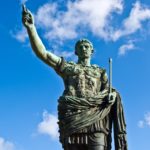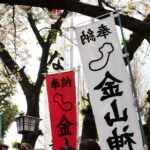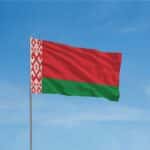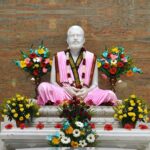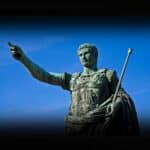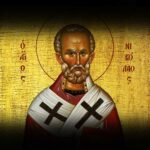1848 Revolution Memorial Day is celebrated on March 15 every year in Hungary. On this day, Hungarians rallied against the Austrian empire, calling for autonomy from the Habsburg Monarchy and introducing several political reforms known as the “12 Points”. The Habsburg Monarchy gradually ceded to the revolutionaries’ demands, granting them a degree of political independence by allowing them to form a government and appointing a Hungarian prime minister. Although the revolution was not a complete success, it sowed the seeds of nationalism in the hearts of Hungarians and gave them hope that someday they would overcome their oppressors.
History of 1848 Revolution Memorial Day
1848 saw a wave of liberalism sweeping through the European continent, disrupting the status quo in countries like Germany, Italy, France, and Hungary. Hungarians felt that the absolutist system established during the Napoleonic wars did not cater to their interests. The Austrian empire, which ruled over them, showed political and administrative reform reluctance. Their feudal estate-based bureaucratic system placed Hungary under complete control of Vienna. The Hungarian State Assembly never convened, while members of the national opposition faced police persecution and censorship.A nationalist movement began taking shape in the 1830s, driven by liberal intellectuals and politicians. From nobles to peasants, all Hungarians nurtured a desire to renew their country by dismantling the old feudal systems and reforming the economy. Citizens began participating in political activities. Lajos Kossuth was at the forefront of this nationalist movement. He was a radical politician determined to secure autonomy from the Austrian empire. On March 3, 1848, Kossuth gave a passionate speech calling for the introduction of a constitution, the formation of a government that answered to the parliament, and the immediate implementation of a liberal reform program. This fiery address sparked the revolution.On March 15, an uprising began in Pesta, led by students and liberal activists. Though the liberals succeeded in establishing a government of their own and abolishing feudalism, the revolution did not achieve all its goals. The Austrians briefly retreated to Vienna and returned to Budapest in August 1849 with Russian reinforcements, swiftly crushing the rebellion and its leaders. Hungary was placed under martial rule, and the 13 generals who led the nationalist forces were all executed. The revolution of 1848 may have been a failure, but it was the longest and most successful of the European revolutions at the time.
1848 Revolution Memorial Day timeline
Hungarian liberals successfully obtain amnesty for political prisoners and establish a local representative government.
Disagreements between conservatives and liberals cause a stalemate in the rolling out of reforms, stalling the new state assembly.
Hungarian people take to the streets, deposing municipal authorities and releasing political prisoners.
With the help of the Russians, the Austrians take back Budapest and quickly crush the revolution, imposing martial law on Hungary.
1848 Revolution Memorial Day FAQs
Why did the Hungarians revolt in 1848?
The revolution in France and other European states influenced the Hungarians to revolt against Austrian rule.
Who ruled Hungary in 1848?
Hungary was under the leadership of Emperor Ferdinand I.
How did Communism end in Hungary?
Communist rule in Hungary ended in 1989 with a peaceful transition to democracy.
How to Observe 1848 Revolution Memorial Day
-
Research on Kossuth’s achievements
Lajos Kossuth is considered the face of the revolution. His rise from a humble background to becoming the president-regent of Hungary is a tale you must read.
-
Wear a cockade
The cockade or 'kokárdák' is a circular ribbon with the colors of the Hungarian flag. It symbolizes the revolution and national independence. Hungarians wore it on the left breast of their coats on the eve of the revolution in 1848.
-
Read the poetry of Sándor Petőfi
He is the national poet of Hungary and was a crucial figure in the revolution. He co-wrote the (12 points) and wrote the "Nemzeti Dal," a patriotic poem. Even before the events of March 15, his poetry was well known, and Hungarian people admired his work.
5 Interesting Facts About Hungarian History
-
It's one of Europe's oldest countries
Hungary was founded in 897 A.D., before the unification of Anglo-Saxon kingdoms and the separation of France and Germany.
-
It’s among the largest states in Europe
Around 1000 A.D., the Hungarian kingdom was one of the largest states in Europe, even bigger than France.
-
Hungary was part of Rome
Hungary was once part of the Celtic world, and then it was absorbed by the Roman empire.
-
Don't clink your beer glasses here
When the 13 Hungarian generals got executed following the failed revolution of 1848, Austrians clinked their glasses after each execution; Hungarians considered it an insult and still feel the same way today.
-
One of their kings became a saint
King Stephen I of Hungary was canonized as a saint in 1083 A.D., becoming their patron saint of kings.
Why 1848 Revolution Memorial Day is Important
-
The power of defiance
Like all revolutions, what happened in Hungary in 1848 was a testament to the power of human defiance. Despite the failure of the process, it showed ordinary Hungarians that if they stood united, they could overcome the greatest of odds and the most oppressive of regimes.
-
Becoming a democracy
The revolution led to the enacting of laws on democratic parliamentary elections. It also established a representative parliamentary system, replacing the old feudal estate-based parliament. Hungary became the third nation in continental Europe to hold democratic elections, quite the achievement in history.
-
A victory for the ordinary person
Though Hungarian separatists failed in ultimately deposing the Habsburg absolutists, they did win some small gains for the peasants. Hungarian commoners were freed from the shackles of serfdom and made owners of the lands they tilled.
1848 Revolution Memorial Day dates
| Year | Date | Day |
|---|---|---|
| 2023 | March 15 | Wednesday |
| 2024 | March 15 | Friday |
| 2025 | March 15 | Saturday |
| 2026 | March 15 | Sunday |
| 2027 | March 15 | Monday |












